- Benefits of growing white currants
- 1. High nutritional value
- 2. Versatile in the kitchen
- 3. Low maintenance
- 4. Beautiful addition to your garden
- 5. Attracts wildlife
- Choosing the right variety of white currant
- 1. White Versailles
- 2. Blanka
- 3. Primus
- Climate and soil requirements for white currant
- Planting and caring for white currant
- 1. Choosing the right location
- 2. Soil preparation
- 3. Planting white currant
- 4. Watering
- 5. Fertilizing
- 6. Pruning
- 7. Protection from pests and diseases
- 8. Harvesting
- Pruning and training white currant plants
- When to prune
- How to prune
- Training methods
- Additional tips
- Harvesting and preserving white currants
- Harvesting white currants
- Preserving white currants
- Common pests and diseases affecting white currant
- Pests
- Diseases
- Question-answer:
- What are the different varieties of white currants?
- How do you propagate white currant plants?
- What is the best time to plant white currant bushes?
- How long does it take for white currant bushes to bear fruit?
- Do white currant bushes require any special care?
- Video: How to Root Blueberry Bushes from Cuttings | Propagating Softwood Cuttings of Blueberry Plants
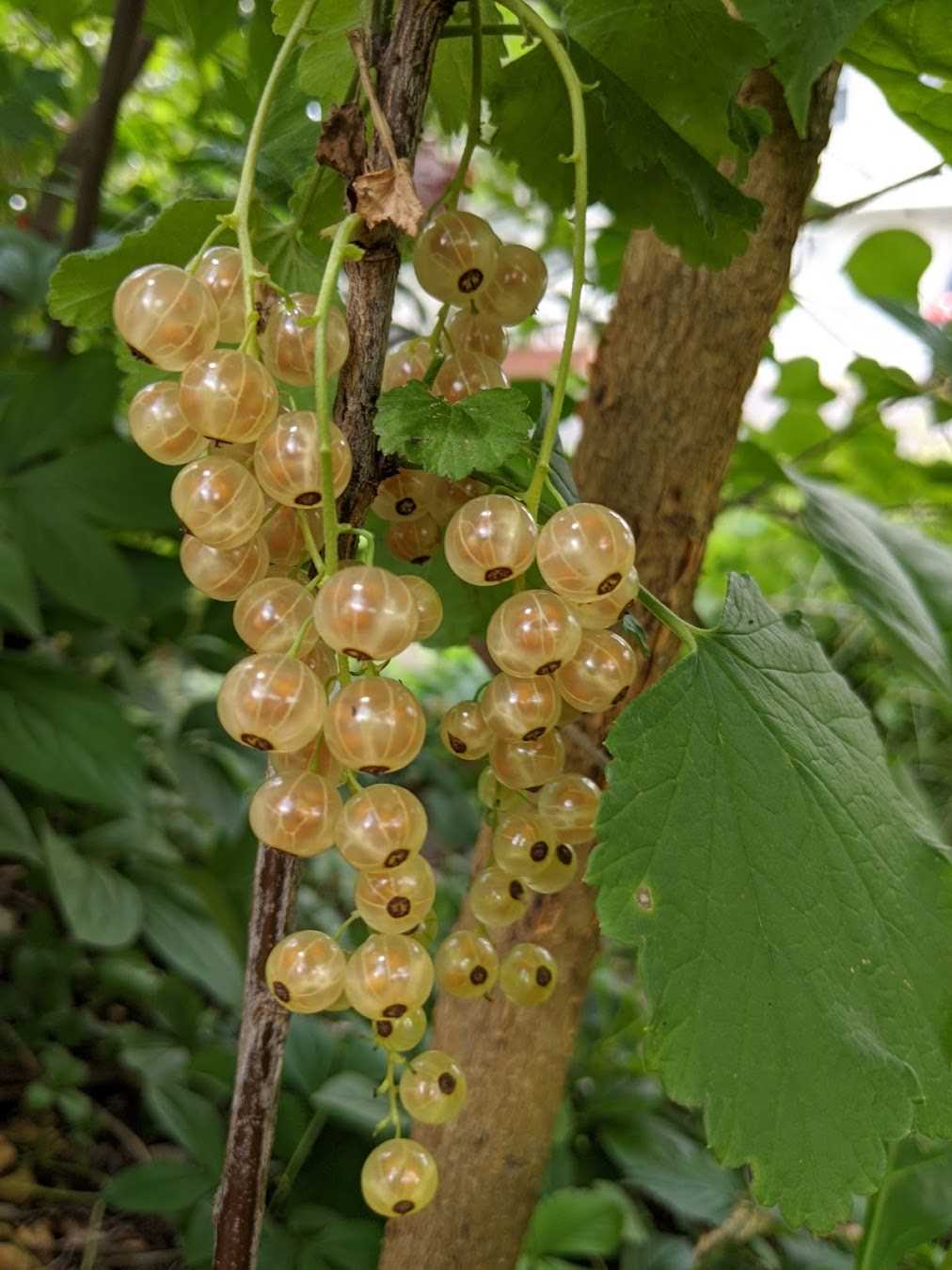
White currant is a popular fruit that belongs to the genus Ribes in the family Grossulariaceae. It is a close relative of the red currant and black currant, but it stands out with its unique white or yellowish berries. This delightful fruit is prized for its sweet and tangy taste, making it a favorite among both gardeners and consumers.
White currants are native to Europe and have been cultivated for centuries. They are known for their adaptability and can thrive in various climate conditions, making them a suitable choice for gardeners around the world. Cultivating white currants is not only a rewarding experience but also an opportunity to diversify your home garden.
Reproducing white currant plants is mainly done through cuttings. This method ensures that the new plant inherits the desired qualities of the parent plant, such as disease resistance and fruit quality. Cuttings are taken during the dormant season and are planted in well-drained soil. With proper care and maintenance, these cuttings will develop into healthy white currant plants.
There are several white currant varieties available, each with its own unique characteristics. Some popular varieties include ‘White Versailles,’ ‘Blanka,’ and ‘White Pearl.’ These varieties differ in terms of berry size, taste, and plant growth habit. It is recommended to choose a variety that suits your specific needs and growing conditions.
Whether you are an experienced gardener or a beginner, growing white currants is a wonderful way to enhance your garden and enjoy fresh and flavorful fruits. With the right cultivation techniques, proper reproduction methods, and the right variety choice, you can enjoy a bountiful harvest of white currants year after year.
Benefits of growing white currants
Growing white currants in your garden can bring a variety of benefits. Here are some of the reasons why you should consider cultivating these delicious berries:
1. High nutritional value
White currants are packed with vitamins, minerals, and antioxidants. They are an excellent source of vitamin C, which can boost your immune system and improve your overall health. Consuming white currants regularly can also provide you with important minerals like potassium and manganese.
2. Versatile in the kitchen
White currants have a unique flavor that is both sweet and tart, making them a versatile ingredient in the kitchen. They can be used in a variety of recipes, including desserts, jams, jellies, sauces, and even cocktails. Their vibrant color also adds a beautiful touch to any dish.
3. Low maintenance
White currant bushes are relatively easy to grow and maintain, making them a great choice for both experienced and novice gardeners. They are hardy plants that can tolerate a wide range of soil types and climates. With proper care, they can produce abundant fruit for many years.
4. Beautiful addition to your garden
The white currant bushes are not only productive but also aesthetically pleasing. They have delicate clusters of white berries that stand out against their dark green foliage. They can be grown as ornamental plants, adding beauty to your garden while providing you with a bountiful harvest.
5. Attracts wildlife
White currants are not just enjoyed by humans but also by various wildlife species. The berries are a favorite treat for birds, butterflies, and bees. By cultivating white currants, you can create a welcoming habitat for these beneficial creatures, contributing to the biodiversity of your backyard.
In conclusion, cultivating white currants not only provides you with delicious and nutritious berries but also offers various other benefits. Whether you are a gardener or a food lover, growing white currants can be a rewarding and enjoyable experience.
Choosing the right variety of white currant
When selecting a white currant variety for cultivation, it is important to consider several factors such as taste preference, growing conditions, disease resistance, and fruit yield. Here are some popular white currant varieties to consider:
1. White Versailles
- Taste: Sweet and slightly tart
- Yield: High
- Growing conditions: Cold hardy, prefers full sun
- Notes: This variety is known for its large, flavorful berries. It is resistant to powdery mildew.
2. Blanka
- Taste: Sweet and aromatic
- Yield: Moderate
- Growing conditions: Cold hardy, prefers partial shade
- Notes: Blanka currants have a translucent white color and are highly regarded for their dessert quality.
3. Primus
- Taste: Sweet and tangy
- Yield: High
- Growing conditions: Tolerates both full sun and partial shade
- Notes: Primus currants are disease-resistant and well-suited for home gardens.
Before making a final choice, it is recommended to research and consult with local gardening experts to ensure the selected variety is suitable for your specific growing conditions.
Climate and soil requirements for white currant
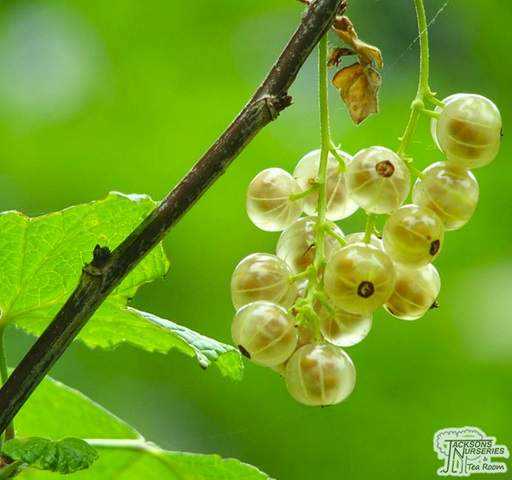
White currants thrive in cool temperate climates, typically found in regions with mild summers and cold winters. They are well-suited for cultivation in areas with average temperatures ranging from 15°C to 20°C (59°F to 68°F) during the growing season.
These plants require a good amount of sunlight to grow and produce healthy fruit. They should be planted in locations that receive at least 6 hours of direct sunlight each day. However, they can tolerate partial shade, especially in regions with hot summers.
White currants prefer well-drained soils with a pH range of 6.0 to 6.5. They are not particularly picky about soil type and can grow well in sandy, loamy, or clay soils. It is important to ensure that the soil is fertile and rich in organic matter, as this will provide the necessary nutrients for optimal growth and fruit production.
These plants do not tolerate waterlogged or overly wet soils, as this can lead to root rot and other diseases. To prevent waterlogging, it is recommended to plant white currants in raised beds or to improve the drainage of the soil by adding organic matter or sand.
In terms of climate, white currants are more tolerant of cold temperatures compared to other currant varieties. They can withstand temperatures as low as -25°C (-13°F) during winter dormancy. However, they may require protection from frost during the early spring when new growth begins.
Planting and caring for white currant
White currant is a beautiful and delicious fruit that can be easily grown in your garden. Here are some tips for planting and caring for white currant:
1. Choosing the right location
White currant plants prefer a sunny or partially shaded location. Make sure to choose a spot that gets at least 6 hours of sunlight per day. The soil should be well-draining and rich in organic matter.
2. Soil preparation
Before planting white currant, prepare the soil by removing any weeds and loosening it with a garden fork. Mix in some well-rotted compost or aged manure to improve the soil’s fertility.
3. Planting white currant
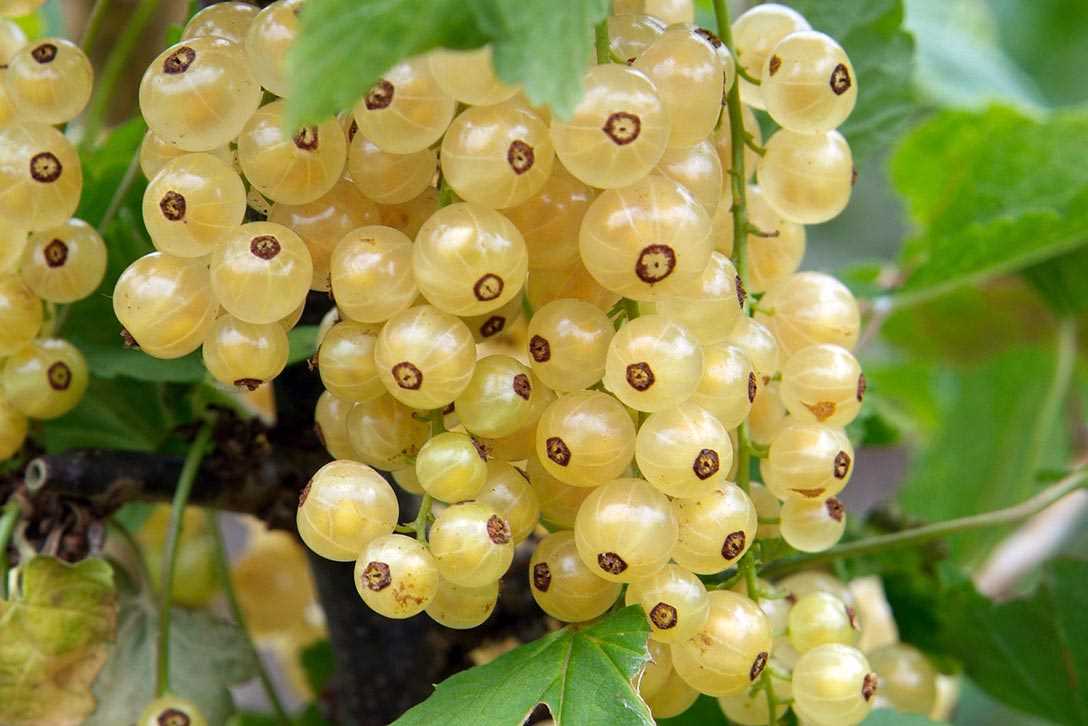
Dig a hole that is slightly larger and deeper than the root ball of the white currant plant. Place the plant in the hole and backfill with soil, ensuring that the crown of the plant is level with the soil surface. Water the plant thoroughly after planting.
4. Watering
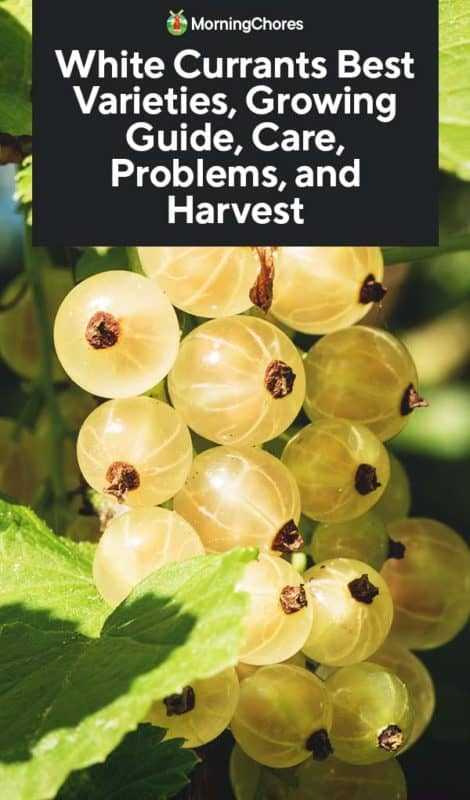
White currant plants need regular watering, especially during dry spells. Keep the soil consistently moist, but avoid overwatering as this can lead to root rot. Water deeply and slowly to ensure that the roots get enough moisture.
5. Fertilizing
White currant plants benefit from yearly fertilization. Apply a balanced, slow-release fertilizer in early spring or use compost or well-rotted manure as a natural fertilizer.
6. Pruning
Pruning is important for maintaining the health and shape of white currant plants. In late winter or early spring, remove any dead, damaged, or crossing branches. Keep the center of the plant open to improve air circulation.
7. Protection from pests and diseases
White currants are prone to aphid infestations and powdery mildew. Keep an eye out for any signs of these pests or diseases and take appropriate measures to control them. Regularly inspect the plants and take preventive actions if necessary.
8. Harvesting
White currant berries are ready for harvest when they are fully ripe and easily detach from the stem. Gently twist or cut the berries from the plant to avoid damaging the branches. Harvesting is usually done in mid to late summer.
By following these tips, you can enjoy a bountiful harvest of delicious white currants!
Pruning and training white currant plants
Pruning and training are important aspects of white currant plant care. Proper pruning helps to maintain the health, shape, and productivity of the plants, while training ensures that they grow in a structured manner.
When to prune
- The best time to prune white currant plants is in late winter or early spring, before new growth begins.
- Pruning during this time allows the plants to recover quickly and promotes vigorous growth.
How to prune
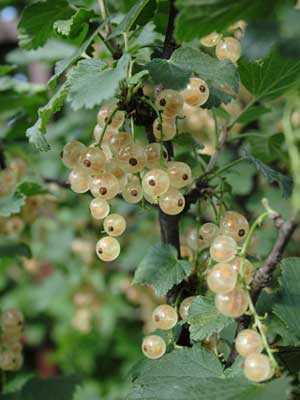
- Start by removing any dead, damaged, or diseased wood. Cut these branches back to healthy wood, making clean cuts just above a bud.
- Next, thin out overcrowded branches to improve air circulation and light penetration. Remove any weak or crossing branches that may rub against each other.
- To encourage fruit production, prune the main stems by cutting them back by about one-third of their length. This helps to maintain a balance between vegetative and fruiting growth.
- Remove any suckers that emerge from the base of the plant, as these can divert energy away from the main plant.
Training methods
White currant plants can be trained using different methods, depending on the desired shape and space availability:
- Espalier: This method involves training the main stems to grow horizontally along a support system, such as a fence or wall. This helps to maximize space and create a decorative display.
- Bush: The bush form is the most common training method for white currant plants. It involves allowing the plant to grow naturally into a compact, rounded shape.
- Cordon: Cordon training involves training a single stem along a support system, such as a wire or bamboo cane. This method is useful for small gardens and allows for easy maintenance and harvesting.
Additional tips
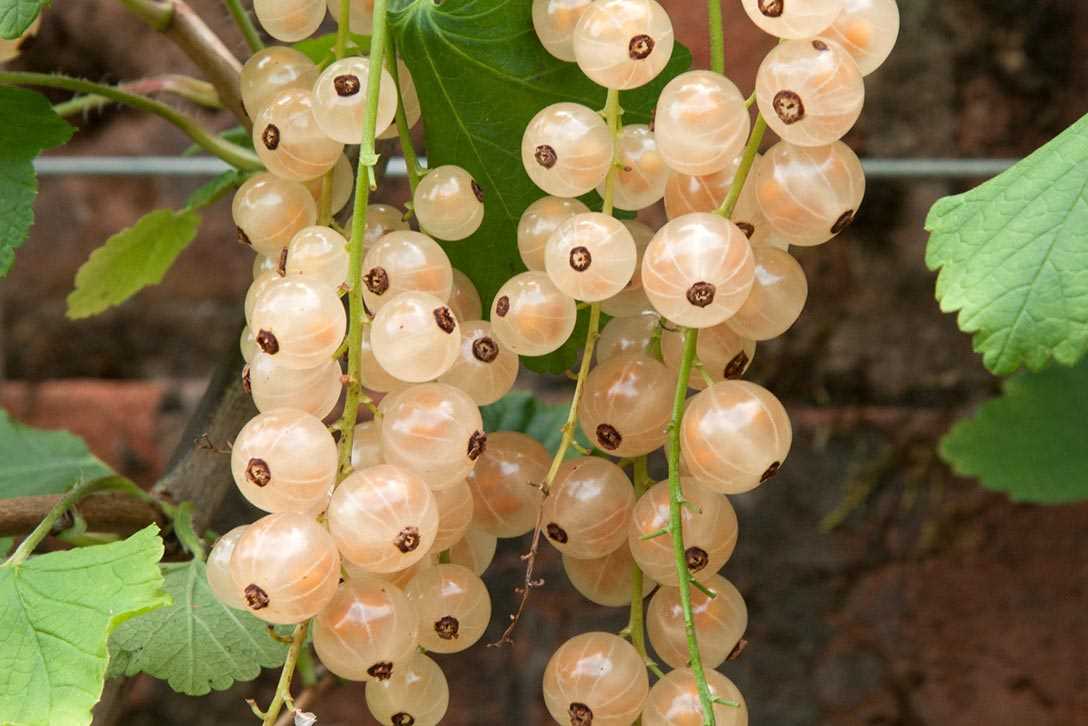
To ensure successful pruning and training of white currant plants, consider the following tips:
- Use clean and sharp pruning tools to make precise cuts and minimize the risk of spreading diseases.
- Regularly inspect the plants for pests and diseases, and take appropriate measures to control them.
- Apply a layer of mulch around the base of the plants to suppress weeds, retain moisture, and maintain soil temperature.
- Provide adequate water and fertilizer to promote healthy growth and fruit production.
- Monitor the growth of the plants and adjust the training as necessary.
By following these pruning and training techniques, you can ensure that your white currant plants remain healthy, productive, and a beautiful addition to your garden.
Harvesting and preserving white currants
White currants are typically ready for harvest in late spring or early summer, depending on the variety and growing conditions. It is important to harvest the berries when they are fully ripe for the best flavor and sweetness.
Harvesting white currants
When harvesting white currants, follow these steps:
- Inspect the berries: Examine the berries carefully, looking for plump, firm, and fully mature fruits. Avoid picking any berries that are unripe or damaged.
- Use a gentle touch: White currant berries are delicate and can easily bruise or become squished, so be gentle when handling them.
- Snip or pluck: Using a pair of scissors or your fingers, snip or pluck the berries from the stems. Be careful not to damage the plant or remove any unripe berries.
- Collect in a container: Place the freshly picked white currants into a clean and dry container. Avoid overcrowding the berries to prevent them from getting damaged.
Preserving white currants
Here are some common methods for preserving white currants:
- Freezing: White currants can be frozen for long-term storage. Simply wash and dry the berries, remove any stems, and place them in a freezer-safe bag or container. Freeze the berries for up to a year.
- Jam or jelly: White currants make delicious jams and jellies. Combine the berries with sugar and cook them down until thickened. Pour the hot mixture into sterilized jars, seal, and store in a cool, dark place.
- Drying: White currant berries can also be dried to extend their shelf life. After washing and drying the berries, spread them out on a tray and place in a well-ventilated area. Allow the berries to air dry until they are shriveled and leathery.
By harvesting and preserving white currants properly, you can enjoy their unique flavor and use them in various culinary creations throughout the year.
Common pests and diseases affecting white currant
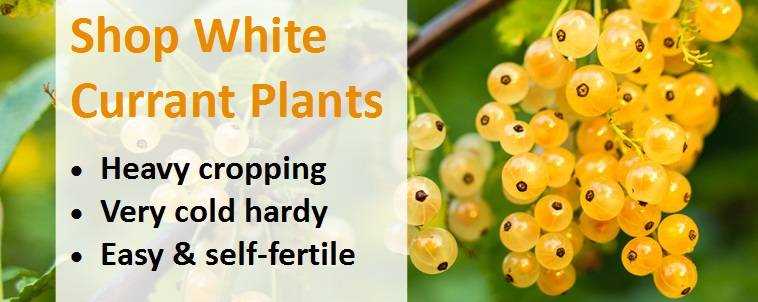
White currants are generally resistant to many pests and diseases. However, there are a few common issues that can affect their growth and overall health. It is important to be aware of these problems and take appropriate measures to prevent and control them.
Pests
- Aphids: Aphids are small insects that suck sap from the leaves and stems of white currant plants. This can cause curling of leaves and yellowing of foliage. Regular monitoring and control measures, such as spraying with insecticidal soap or neem oil, can help to manage aphid infestations.
- Spider mites: Spider mites are tiny pests that feed on the undersides of leaves, causing them to turn yellow and dry out. They thrive in dry conditions, so regular watering and maintaining humidity levels can help prevent spider mite infestations.
- Whiteflies: Whiteflies are small, white, moth-like insects that feed on the sap of white currant plants. They can cause leaf yellowing, stunted growth, and even transmit viral diseases. Using sticky traps, insecticidal soap, or neem oil can help to control whiteflies.
Diseases
- Anthracnose: Anthracnose is a fungal disease that causes dark, sunken lesions on leaves, stems, and fruits. It can lead to leaf drop and reduced fruit production. Removing infected plant material and applying fungicides can help manage anthracnose.
- Powdery mildew: Powdery mildew is a common fungal disease that appears as white, powdery spots on leaves and shoots. It can hinder photosynthesis and weaken the plant. Regular monitoring and applying fungicides early in the season can help control powdery mildew.
- Rust: Rust is a fungal disease that causes yellow or reddish-brown spots on leaves, stems, and fruits. It can weaken the plant and reduce fruit quality. Removing infected plant material and applying fungicides can help manage rust.
- Botrytis fruit rot: Botrytis fruit rot is a common fungal disease that affects the fruits of white currant plants. It causes brown lesions with a fuzzy gray mold. Proper airflow around the plants, removing infected fruits, and applying fungicides can help prevent and control botrytis fruit rot.
Regular inspection, proper sanitation practices, and maintaining overall plant health can greatly reduce the chances of pests and diseases affecting white currant plants. It is also important to choose disease-resistant varieties and provide suitable growing conditions to minimize the risk of infestations and infections.
Question-answer:
What are the different varieties of white currants?
There are several varieties of white currants available, including ‘White Pearl’, ‘Versailles Blanche’, and ‘Blanka’.
How do you propagate white currant plants?
White currant plants can be propagated through hardwood cuttings or by layering. Hardwood cuttings can be taken in winter and should be rooted in a well-draining soil mix. Layering involves bending a branch down to the ground and covering it with soil to encourage rooting.
What is the best time to plant white currant bushes?
The best time to plant white currant bushes is in late autumn or early spring when the plants are dormant. This allows them to establish their roots before the growing season begins.
How long does it take for white currant bushes to bear fruit?
White currant bushes usually start bearing fruit after two to three years of growth. However, the exact timing may vary depending on the specific variety and growing conditions.
Do white currant bushes require any special care?
White currant bushes require regular watering, especially during dry periods, and benefit from a layer of mulch around the base of the plants to help conserve moisture. Pruning is also necessary to remove dead or diseased branches and to maintain a healthy shape.







